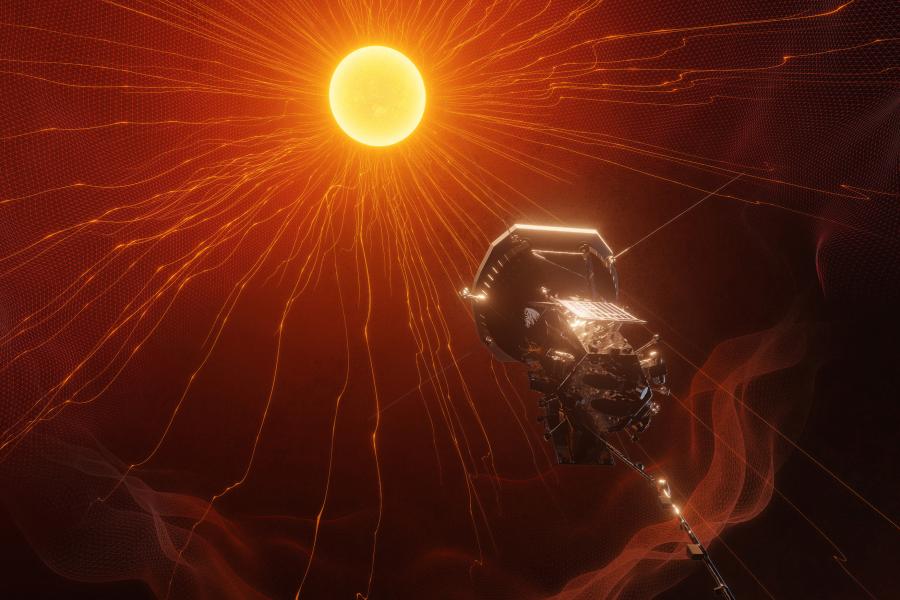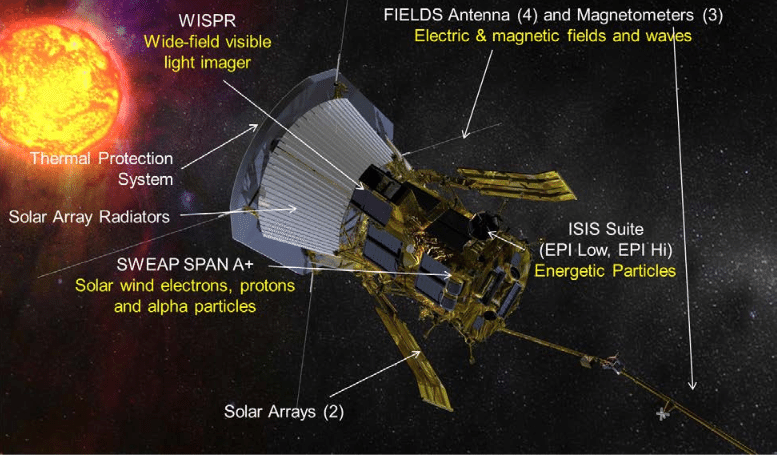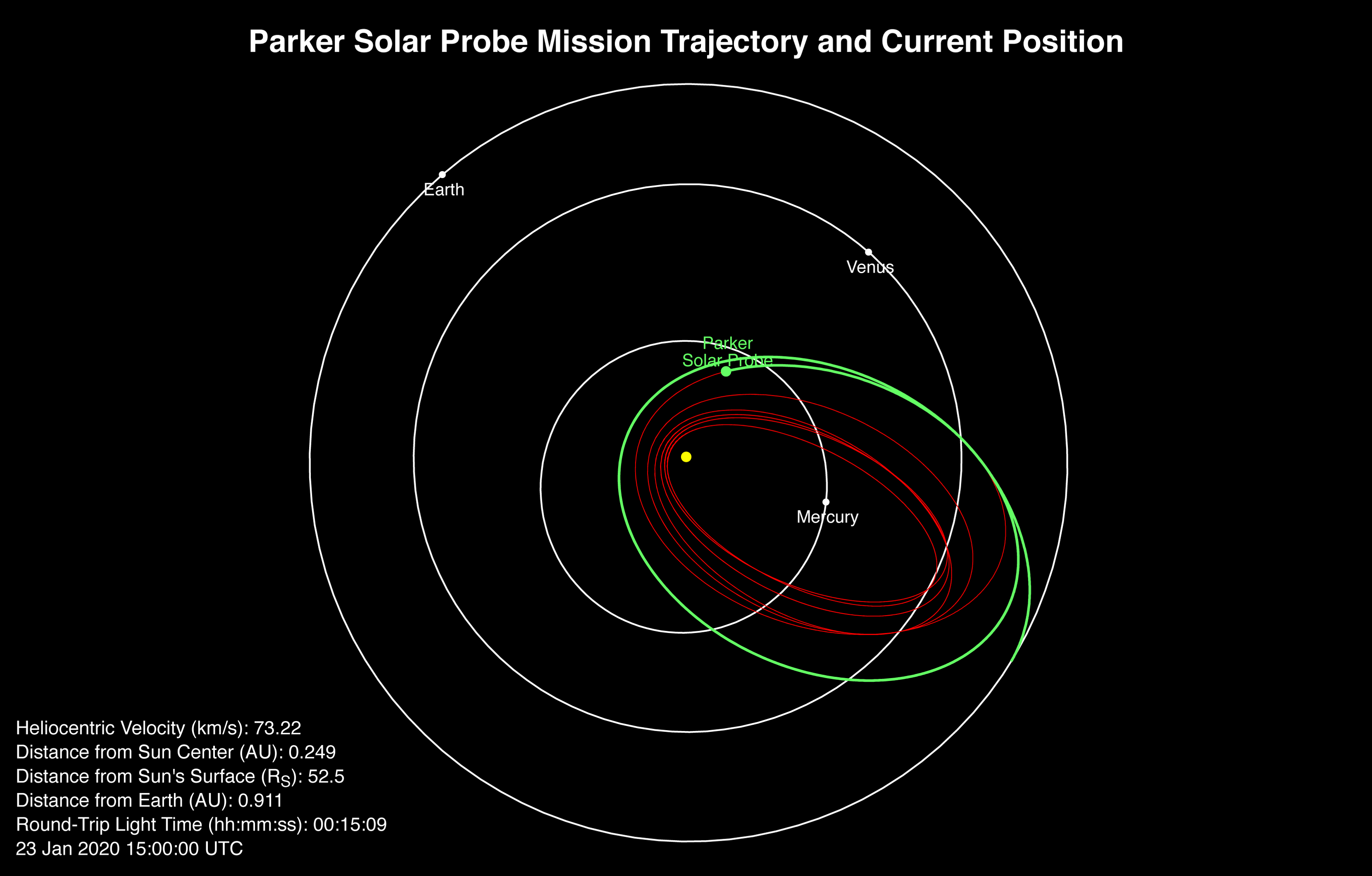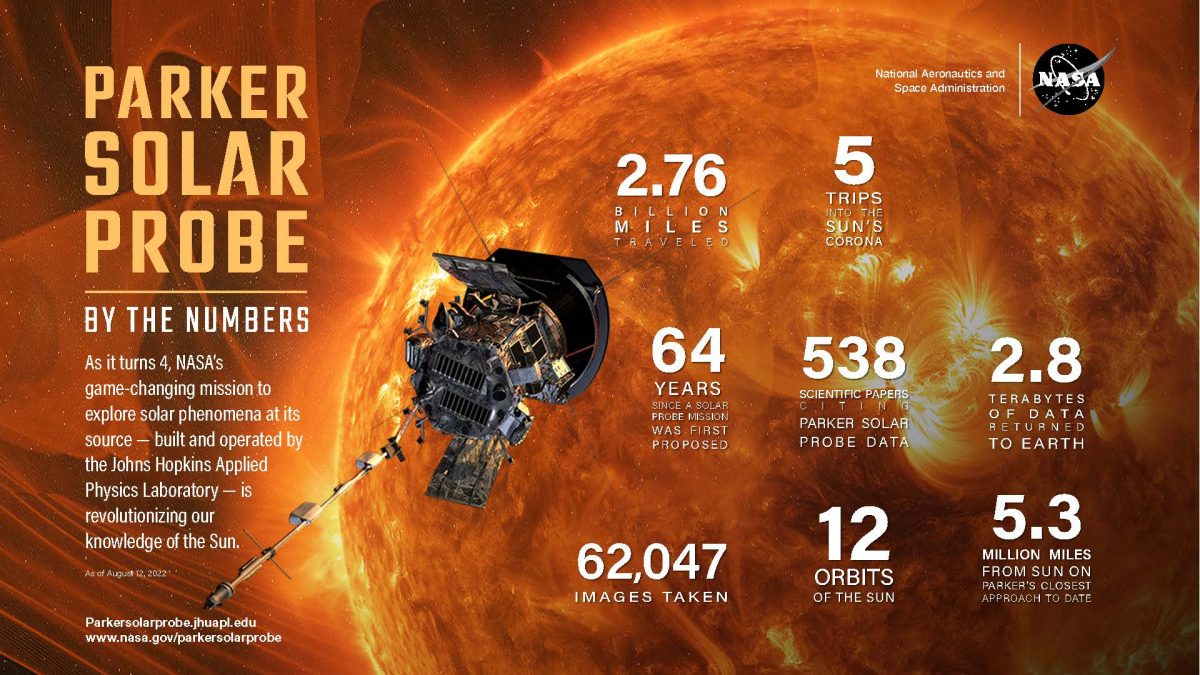

Cosmox Blogs
Parker Solar Probe: Spacecraft that touched Sun
The Parker Solar Probe is a space probe designed by NASA to study the sun’s atmosphere, also known as the corona. Parker Solar Probe is named after Eugene Parker, a physicist who first proposed the idea of the solar wind, the probe was launched on August 12, 2018. It is part of Nasa’s Living with a Star Program, which aims to study the Sun-Earth system and its effect on human activities. The parker’s solar probe made history by becoming the first spacecraft to touch the sun. It passed through the sun’s upper atmosphere (Corona). Solar Corona's temperature can rise to a million degrees celsius. Corona is the hottest region of the sun, the biggest question that arises here is ”Why didn’t it melt?”. No metal can withstand that extreme temperature, then how did Parker Solar Probe manage to still properly function even after passing through the Corona region?

The outermost layer (Corona) of the sun consists of plasma and extends millions of kilometers into space, usually, this layer is hidden in the glare of the sun however it can be easily seen during a total solar eclipse and through a coronagraph which blocks direct sunlight from the sun. The laws of thermodynamics tell us that heat cannot flow from a cold body to a hotter one so why/how is the sun's surface at around 5800 - 6000 degrees Celsius and the solar corona at over a million degrees Celsius. There can be an unknown mechanism that’s heating the corona, although the corona has a high temperature, its particle density is very low and that’s where the concept of Heat vs Temperature becomes important.
Heat is not the same as temperature. Temperature is a measurement, but heat is an energy transfer. This matters because the Solar Probe will be passing/visiting the Corona (outermost layer of sun). Like all stars, the sun is made of plasma. Even though sun’s corona has a very high temperature, the plasma particles are fairly spread out. So even though the temperature in the corona is around 1 to 3 million degree celsius, the heat around the spacecraft is manageable. So as there is really fewer particles in the corona with very high temperature it won’t affect the spacecraft, also the probe won’t be touching a lot of them too. For example, it's like putting your hand in boiling water and in a heated oven. If you put your hand in a heated oven, you will be able to keep your hand inside for a longer time and there is no contact with the surface and the particle density is less but if you put your hand in boiling water, you come in contact with the water and will not be able to keep your hand in for a long time as the particle density is lot and heat transfer takes place rapidly. This way the Parker Solar Probe doesn’t melt even after passing through the hottest region of the sun.

Now how does the probe maintain its temperature? It has a Thermal Protection System (TPS) which consists of a heat shield made of carbon composite material that can withstand temperatures of upto 13,777 degree celsius (2,5000 degree Fahrenheit). The shield is made of carbon composite foam sandwiched between two carbon plates this shield is 2.4 meters in diameter and 4.5 inches or 0.11 meters thick. This allows the Parker probe to maintain a temperature of 30 degree celsius. The solar panels power the probe and as it gets closer to the sun, they might get overheated so to keep everything cool, the spacecraft circulates a single gallon of water through its solar array, the water absorbs heat as it passes behind the arrays and then radiates the heat into space as it flows into Parker’s radiator. The heat shield edges are accompanied by seven smart sensors if any of these detect direct sunlight they alert the Central Computer which directs the spacecraft to correct its position this way all the components are safely protected behind the heat shield. so this is how Parker is gathering a wealth of information, if everything goes as planned the probe will send data from within 6.16 million kilometers of the sun's surface by the end of the mission this would reveal the solar Secrets at depths that have never been reached before. The probe also has an array of scientific instruments, including a wide-field camera, a particle detector, and a magnetometer, to study the sun’s atmosphere and its magnetic field.

One of the key features of the Parker Solar Probe is its orbit. The probe follows an elliptical orbit that takes it close to the sun than any other spacecraft has ever been. The closest approach or perihelion is just 6.2 million kilometers (3.85 million miles) from the sun’s surface. The second closest visit was made by Helios 2 spacecraft. The Parker Solar Probe will make a total of 24 orbits around the sun, gradually getting closer and closer with each pass. As of September 2021, the Parker Solar Probe has completed 10 orbits around the sun.

The probe has already made some groundbreaking discoveries since its launch. In November 2018, the probe made its first close approach/visit to the sun, sending back data that revealed a surprisingly turbulent environment around the star. The probe has also detected bursts of energetic particles that were accelerated by solar flares, providing new insights into the mechanism behind these explosive events.
The Parker Solar Probe is expected to continue its mission until 2025 and scientists are eagerly waiting for the data. Through this mission, we will be able to increase our understanding of our nearest star and its impact on our solar system.

Cosmox Blogs
A non profit organization that works on writing and delivering blogs on cosmology, natural sciences & environment, so that people can learn more about it. We even run a forums page, where our users interacts with each other and discuss about Cosmology, Natural Sciences & Astronomy. We even run an instagram and a youtube channel with podcasts.